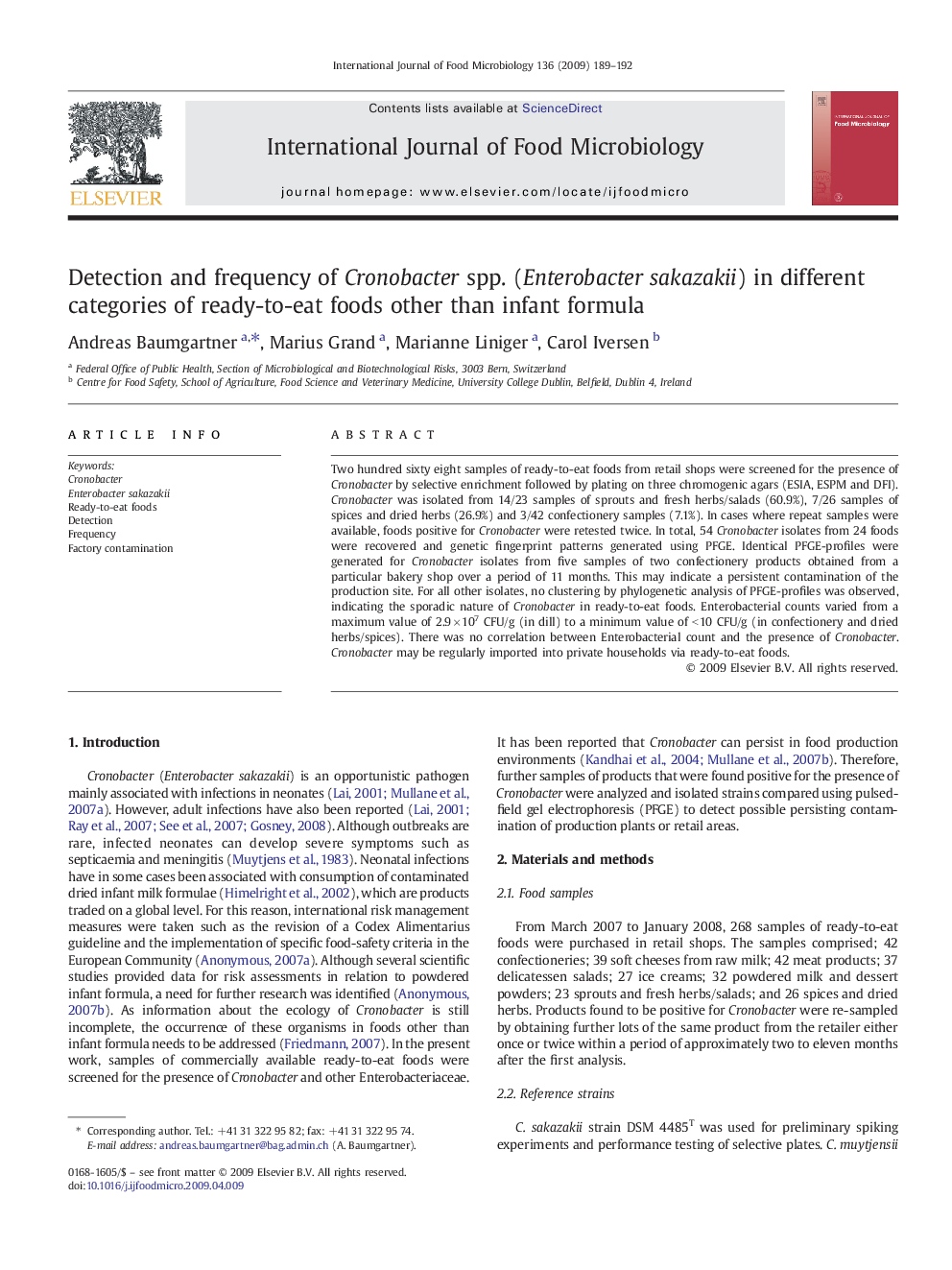| Article ID | Journal | Published Year | Pages | File Type |
|---|---|---|---|---|
| 4368467 | International Journal of Food Microbiology | 2009 | 4 Pages |
Abstract
Two hundred sixty eight samples of ready-to-eat foods from retail shops were screened for the presence of Cronobacter by selective enrichment followed by plating on three chromogenic agars (ESIA, ESPM and DFI). Cronobacter was isolated from 14/23 samples of sprouts and fresh herbs/salads (60.9%), 7/26 samples of spices and dried herbs (26.9%) and 3/42 confectionery samples (7.1%). In cases where repeat samples were available, foods positive for Cronobacter were retested twice. In total, 54 Cronobacter isolates from 24 foods were recovered and genetic fingerprint patterns generated using PFGE. Identical PFGE-profiles were generated for Cronobacter isolates from five samples of two confectionery products obtained from a particular bakery shop over a period of 11Â months. This may indicate a persistent contamination of the production site. For all other isolates, no clustering by phylogenetic analysis of PFGE-profiles was observed, indicating the sporadic nature of Cronobacter in ready-to-eat foods. Enterobacterial counts varied from a maximum value of 2.9Â ÃÂ 107Â CFU/g (in dill) to a minimum value of <Â 10Â CFU/g (in confectionery and dried herbs/spices). There was no correlation between Enterobacterial count and the presence of Cronobacter. Cronobacter may be regularly imported into private households via ready-to-eat foods.
Related Topics
Life Sciences
Agricultural and Biological Sciences
Food Science
Authors
Andreas Baumgartner, Marius Grand, Marianne Liniger, Carol Iversen,
